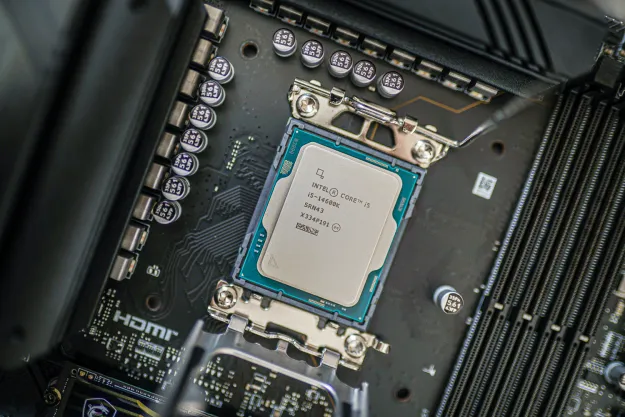We’ve known certain details about Intel’s Raptor Lake processors for a while, but now it seems that the full Raptor Lake-S lineup has leaked. This current leak corroborates some of the earlier reporting about power, memory, and core configurations.
YouTuber AdoredTV confirms that Raptor Lake is the 13th generation and replaces Alder Lake. Raptor Lake will also feature new core architectures that combine next-gen Raptor Cove cores with Alder Lake’s Gracemont cores.

Like Alder Lake, Raptor Lake uses the same hybrid configuration that utilizes more powerful Raptor Cove cores for demanding loads while reserving less power-hungry applications for the more efficient Gracemont cores.
The leak also confirms the power requirements and core counts for various SKUs. The unlocked, enthusiast-oriented “K” series tops out at 125W, mainstream SKUs are at 65W, and “T-series” SKUs sip power at 35W.
The top-end Core i9 configuration will feature eight Raptor Cove cores and 16 Gracemont cores that equal 24 cores and 32 threads. This would represent a dramatic doubling of “efficiency” cores, considering the current rumors surrounding an eight-core/eight-core configuration in Alder Lake. If the leak turns out to be correct, that would mean Intel wouldn’t succeed Gracemont cores with something, but instead would just increase the amount.
The Core i7 reduces the Gracemont core count to eight for a total of 16 cores and 24 threads. The mid-range Core i5 comes in “K” and “S” flavors. The K version gets six Raptor and eight Gracemont (14 cores/20 threads) while the S version drops the number of Gracemont by four (14 cores, 16 threads). The Core i3 eliminates the Gracemont cores altogether in favor of just four Raptor cores (4 cores/ 8 threads). Finally, the ultra-low-power Pentium series gets just two Raptor cores (4 cores/ 4 threads).
All of the Core processors will ship with an integrated GPU (iGPU) based on Intel’s enhanced Xe graphics. While all Core processors will use 32 execution units (EU), certain lower-end CPUs will use either 24 or 16 EU iGPUs.
Performance-wise, the boost clock features a 200MHz increase, now up to 5.5GHz. Intel will allegedly claim that is a “world record turbo frequency,” which is a direct shot across AMD’s bow. There will also be a larger L2 cache which Intel will brand “Game Cache,” similar to AMD’s marketing of its combination of Zen 2’s L2 and L3 cache. Raptor Lake-S will support RAM speeds of up to 5.6 GHz with its low power variant (LPDDR5X) supporting up to 6.5 GHz.
The leak also confirmed that the mobile version of Raptor Lake will support DLVR power delivery. This should attempt to make equipped laptops more competitive in terms of battery life. This is important as Apple’s shift to its own ARM-based M1 platform has made huge strides in battery life while still delivering necessary performance. Intel’s hybrid approach to the CPU combined with DLVR could match Apple’s efficiency.
On paper, these details seem to launch Intel right back into the fight as it moves towards Meteor Lake and a 7nm manufacturing process, now known as Intel 5. This is important as both Alder Lake and Raptor Lake are built on Intel 7 (previously 10nm process). AMD made tremendous gains (and market share) once it moved over to 7nm. If Intel can make these kinds of gains on 10nm, the future definitely looks bright for its upcoming nodes.
Editors' Recommendations
- It just became the perfect time to buy a last-gen Intel CPU
- Nice try, Intel, but AMD 3D V-Cache chips still win
- Reviewers agree: Intel’s latest chip is truly ridiculous
- Intel CPU gaming crashes are causing an uproar
- Intel may have a monster new CPU coming soon




